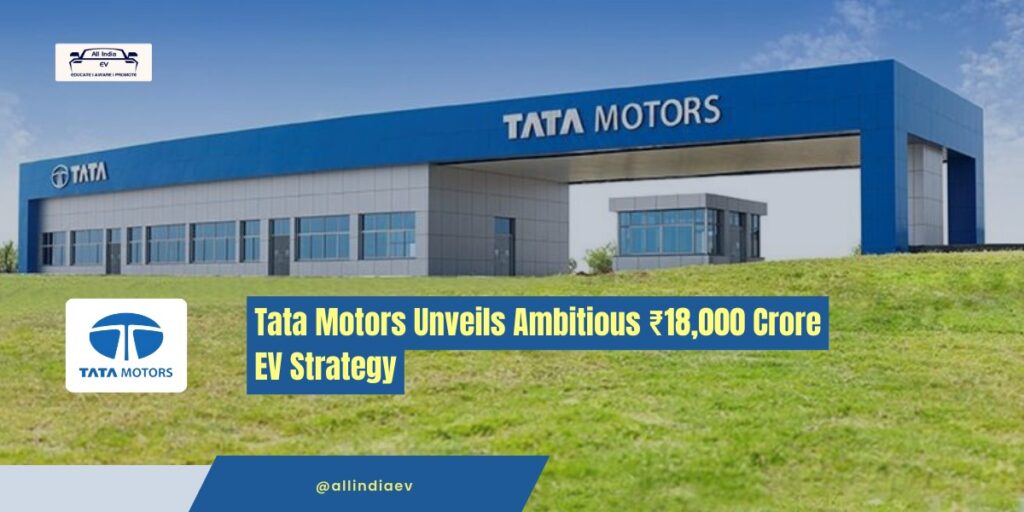
Tata Motors Unveils Ambitious ₹18,000 Crore EV Strategy
According to a top Tata Motors executive, sales of electric vehicles (EVs) in the local market are projected to increase tenfold over the next five years. However, this growth will still fall short of the government’s earlier objective of 30% of new car sales.
“We took a realistic call based on the current state of ecosystem development. Electric vehicles will likely account for 20% of new car sales in the industry. We are targeting 30-40% of our sales to come from electric vehicles by FY30.”
Shailesh Chandra, Managing Director of Tata Motors Passenger Vehicles and Tata Motors Electric Mobility.
List your business on All India EV exclusive business directory… (click here)
The company, which dominates electric car sales in India, had previously estimated that up to half of its volumes would come from EVs during this period.
Significant Investment and Market Share Growth
To support its electric vehicle business, Tata Motors plans to invest Rs 16,000-18,000 crore to strengthen its portfolio and develop an ecosystem for these vehicles, Shailesh Chandra said.
Overall, the company expects the mix of CNG and EVs to increase and aims to raise its market share in passenger vehicles to 18-20% by FY30, up from 13.9% in FY24.
“We will look at increasing our addressable market. Currently, with seven products, we are addressing 53% of the market, and in our addressable market, we have a 26% market share. We aim to increase our addressable market to 80% by FY30.”
Shailesh Chandra, Managing Director of Tata Motors Passenger Vehicles and Tata Motors Electric Mobility.
(You can now subscribe to our All India EV WhatsApp channel)
This expansion will include new model launches and upgrades of existing products. Over the next two years, the company has scheduled the launch of the Curvv EV, Curvv ICE (internal combustion engine), and Sierra EV.
Strategic Focus Post-Demerger
Separately, Tata Motors Group CFO P Balaji explained that the proposed demerger of Tata Motors’ commercial vehicles business will allow the two resultant companies to better focus on their growth strategies. “The commercial vehicle business, which has so far been the cash engine of Tata Motors, will after the demerger be able to invest its cash flows towards its own strategic goals,” Balaji said.
Meanwhile, the passenger vehicles (PV) business, which has only recently become self-sustainable, will focus on achieving 10% EBITDA (Earnings before interest, tax, depreciation, and amortization) margins across its combustion engine and electric vehicle segments. Jaguar Land Rover will remain with the passenger vehicle arm and is expected to become debt-free by next year. The demerger of the commercial and passenger vehicle business is expected to be complete by the first quarter of the next fiscal year.
Growth Drivers for Commercial Vehicles
Girish Wagh, Executive Director of Tata Motors Commercial Vehicle, noted that the business is expected to perform well over the next five years. This optimism is driven by rising disposable income in the country, government spending on infrastructure, and measures being undertaken to ensure a larger play of the manufacturing sector in the GDP, leading to increased freight and passenger movement.
Click here for more such informative insights
Content Credit: EV Mechanica




